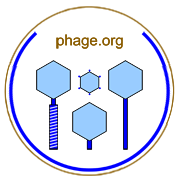
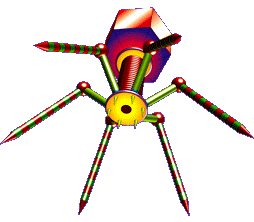
Summary:
One view of the coevolution of parasites and their hosts is that of a gene-for-gene arms race between host defenses and parasite counterdefenses. We have incorporated mutations into a model of the ecological interactions between bacteria and virulent phage to determine rates of mutation that would be consistent with this scenario. The model assumes an open habitat (e.g., a chemostat) in which virulent phage and sensitive bacteria can coexist. Equilibrium densities of bacteria and phage are inversely proportional to the efficiency with which phage irreversibly adsorb to their hosts. The absolute rate at which mutations appear is proportional to the product of habitat size, population density, rate of increase, and mutation rate.
The bacterium Escherichia coli B readily evolved resistance to virulent phage T4 in our chemostat experiments. Approximately 100 h was required for the appearance, establishment, and attainment of a resource-limited population of these T4-resistant mutants; this time period is close to that predicted from the model when the parameters of the model are estimated independently. No host-range phage T4 mutants appeared, yet the phage persisted even after the resistant bacteria had become resource-limited. We hypothesized that the failure to observe corresponding phage mutants indicates mutational constraints on the coevolutionary potential of this phage. We also hypothesized that the persistence of the wild-type phage indicates the presence of a minority population of sensitive bacteria that persists because of selective constraints which produce a competitive disadvantage for resistant bacteria under resource-limiting conditions. Both of these hypotheses were verified. Host-range T4 mutants occurred at a rate on the order of 10-12 or less, and could not be expected in the chemostats for several years. T4-sensitive and -resistant bacteria had very nearly the same exponential growth rates, but at steady state the latter had approximately a 50% disadvantage.
We also examined the interactions of E. coli B and virulent phages T2, T5, and T7 for evidence of selective and mutational constraints on the bacteria and phage, respectively. Under the conditions of our experiments, T2-resistant and T7-resistant (but not T5-resistant) bacteria also had clear competitive disadvantages to sensitive bacteria under resource-limiting conditions. We were able to isolate T2 and T7 (but not T5) host-range mutants. Even with T2 and T7, however, we could not select indefinitely for host-range mutants active against higher-order resistant bacteria. This general asymmetry in the coevolutionary potential of bacteria and phage occurs because mutations conferring resistance may arise by either the loss or alteration of gene function, while host-range mutations depend on specific alterations of gene function.
These constraints preclude observing endless arms races between bacteria and virulent phage. Instead, because of the asymmetry in coevolutionary potential of these hosts and parasites, we anticipate that natural communities of coliform bacteria and virulent coliphage are dominated by bacterial clones resistant to all co-occurring virulent phage. If virulent phage to which the dominant clones are sensitive should appear, then bacteria will either rapidly evolve resistance or be replaced by existing clones resistant to the phage. Thus, the role of virulent phage in structuring communities of bacteria is seen as important in determining clonal composition but unimportant in determining overall bacterial densities.
From p. 59: "With their discovery in the first quarter of this century, phage were advanced as agents for the treatment of infections by pathogenic bacteria. Numerous researchers isolated phage active against dysentery[S1], cholera, diphtheria, gonorrhea, plague, and other dreaded diseases. Yet Stent (1963), Wilson and Miles (1964), and Peitzman (1969) have concluded that phage therapy was a failure. Stent (1963, pp. 8-9) has suggested that 'the facility with which ... bacteria ... sport resistance against phages' was one factor limiting the application of phage therapy. The results presented in this paper support the contention that bacteria can rapidly evolve resistance to phage. The ability of phage to coevolve could, in principle, be a possible advantage over antibiotics; but constraints which we have documented severely limit the coevolutionary potential of virulent phage for such applications. ¶ Williams Smith and Huggins (1982), however, successfully treated experimental E. coli infections in mice using phage. They were able to preclude the rise of a phage-resistant pathogen in the following way. First, pathogenicity of the target bacterium was shown to depend on the presence of a particular surface antigen (Williams Smith and Huggins 1980), a common situation. Second, they isolated phage whose adsorption site on the bacterial surface is that antigen. And third, they found that bacteria become resistant to the phage through the loss of that antigen, and hence their pathogenicity. In essence, they chose a phage for which the target bacterium suffered a nearly complete loss of its ability to utilize the 'mouse substrate' as a consequence of resistance. We suggest that this 'Achilles' heel' strategy be explored for other systems (e.g., Lenski 1984b) for which the evolution of resistance by pests or pathogens to agents of control is problematic."
Return to Home or see Phage Terms/Glossary. Contact web master.
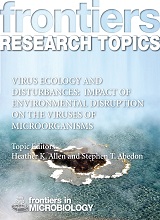
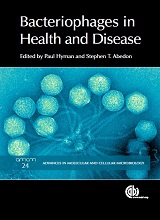
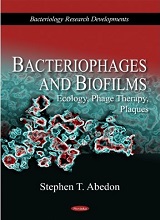
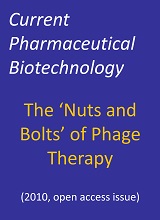
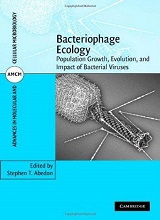
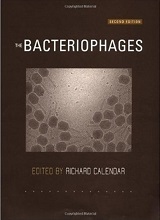
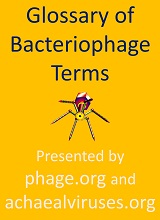
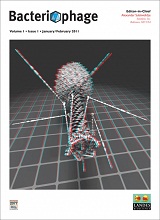
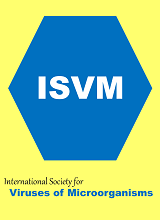
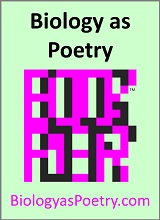
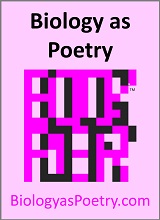
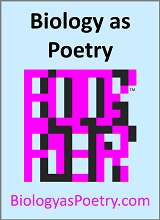
[full text not included]